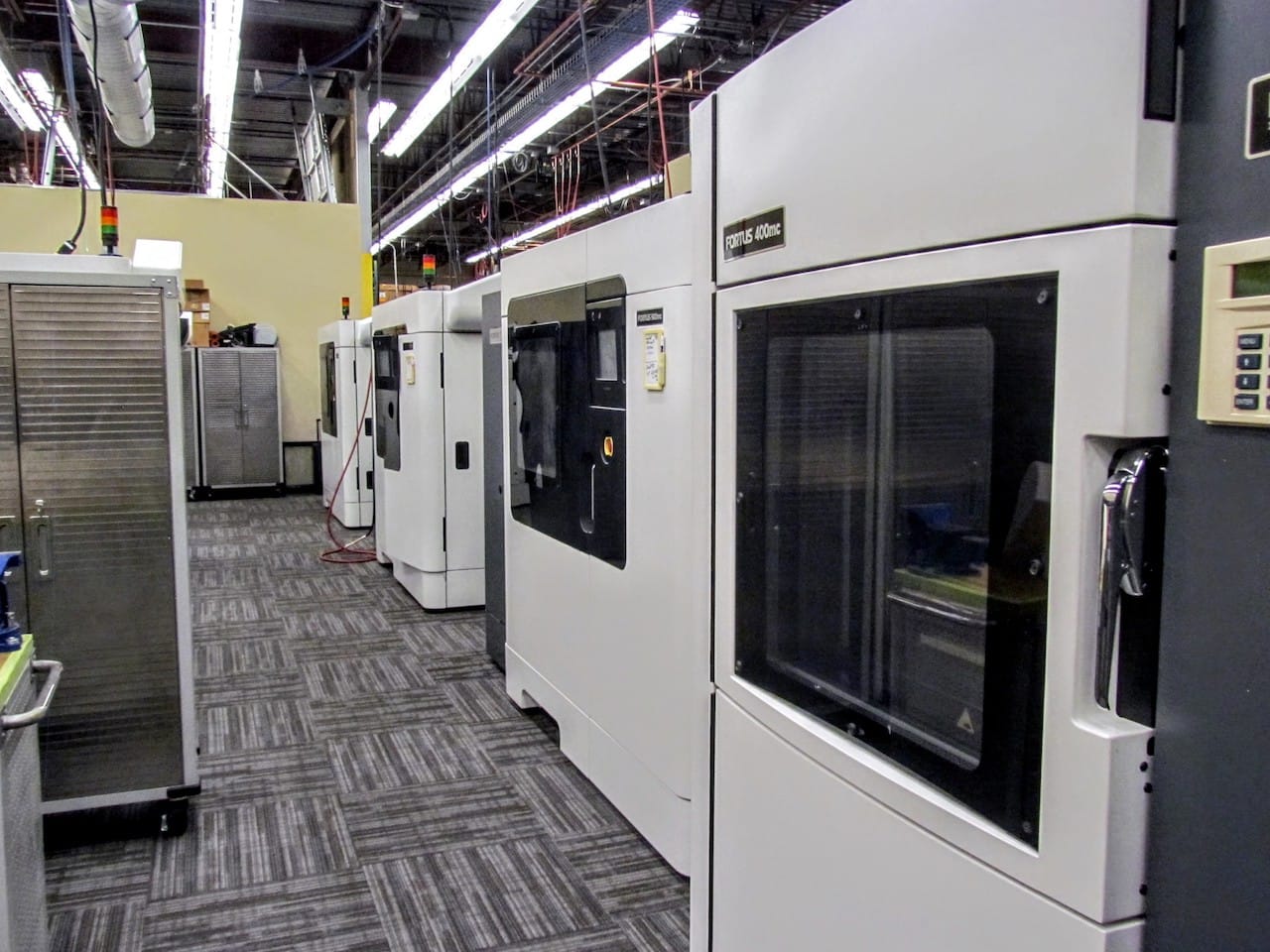![Array of industrial 3D printers [Source: Fabbaloo]](https://fabbaloo.com/wp-content/uploads/2020/05/image-asset_img_5eb093ec76970.jpg)
Students should use 3D printers, but how?
There are two methods of making use of 3D printers in educational environments: acquiring a 3D printer and operating it on-site, or engaging a 3D print service to produce 3D models. Which approach is better?
There are significant advantages in operating one’s own 3D printer on-site, the primary being having instant responsiveness. It’s your machine, and you can operate it directly.
This direct access allows students to learn quite a bit more about 3D printing technology, as they can see and (often) touch the machine. They’ll also become familiar with failure scenarios which happen all too often. Failure is always a great way to learn.
It’s possible using a 3D printer directly could be less expensive than using a 3D print service, but only in certain scenarios. If there is a consistent volume of prints taking place, then it’s likely a 3D printer on-site might be less expensive. On the other hand, if only a few prints are to be made, as would be the case for a one-time project, then the generally more expensive cost of a 3D print service might be less than buying an entire machine and leaving it idle for substantial periods.
Why A 3D Print Service Could Be A Better Option
The use of a 3D print service does offer other advantages, as well.
A 3D print service more than likely offers access to equipment wholly unaffordable by most institutions. Even if an organization could afford a high-level industrial 3D printer, such equipment usually requires a relatively complex operating environment and trained technicians for operation and repair, both of which are less likely to be found in institutions.
That last point is important in another way: quality. The best results from any 3D printer come from an experienced operator who knows precisely how best to use a complex industrial 3D printer. While the 3D printer manufacturers do their best to provide great starter kits to enable quality prints right away, there is nothing like experience to achieve the best results, and that’s what happens at a competent 3D print service.
Finally, 3D print services may also provide access to materials not easily available to individual operations. This could be due to licensing restrictions from the material producer or simply by bulk purchasing power.
Students Using a 3D Print Service
The bottom line here is that educational institutions should reflect on their 3D projects and carefully choose which approach should be taken: own and operate a 3D printer, use a 3D print service, or even both.











If you’re a youngin’ whose neurons have just myelinated or an educator who’s responsible for bludgeoning their brain tissue with knowledge, there’s a 3D printer option you’ll want to add to your lab list – A RIZE 3D Printer.